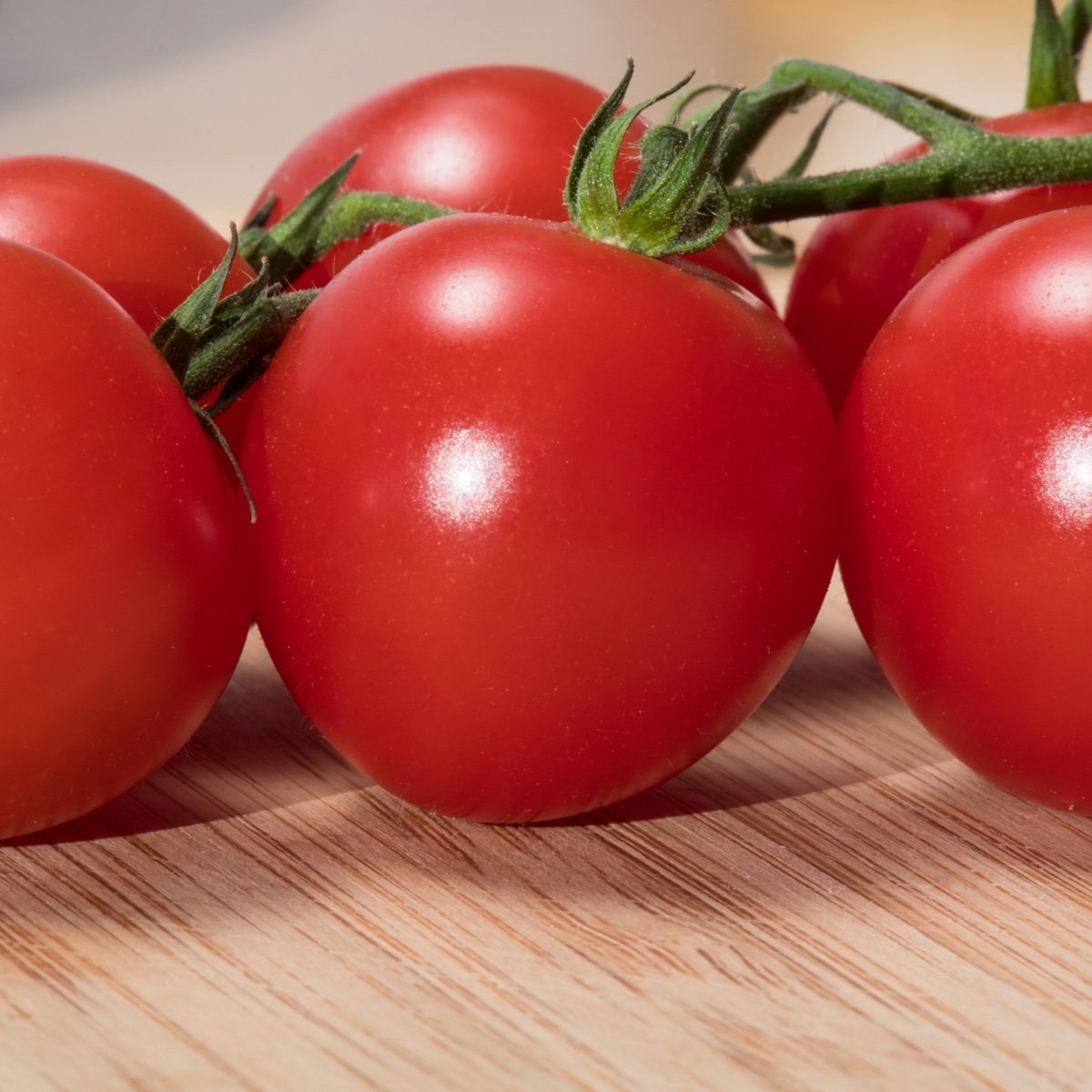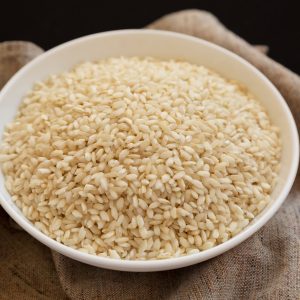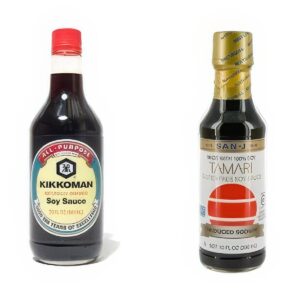All About Tomatoes
Tomatoes are important to me. I grew up in New Jersey, and my dad grew beefsteak tomatoes every summer, so we enjoyed a lot of sliced tomatoes with mayonnaise, salt, and pepper.
For the 20-plus years we lived in Philadelphia suburbs, we grew our own tomatoes. Our kids were raised on Caprese salads made with some beefsteaks, but we also introduced them to heirloom tomatoes.
Now that we’ve moved to Utah, we’ve tried to grow tomatoes but haven’t figured out how to get them to grow during the short growing season out here. A work in progress.
What Are Tomatoes?
Tomatoes are a widely cultivated and consumed fruit (botanically a berry) originating from South America. They are a vital ingredient in many cuisines worldwide and can be eaten raw, cooked, or processed into sauces, juices, and pastes.
The fleshy and juicy fruit contains nutrients, including vitamins C and K, potassium, and lycopene, a powerful antioxidant. The bright red color of ripe tomatoes is due to the high lycopene content. Tomatoes come in various shapes, sizes, and colors, including yellow, green, and black, with the most common variety being the round, red tomato.
They can be grown in various settings, including home gardens and commercial greenhouses, and are an essential crop for both large-scale commercial and small-scale subsistence farming. They can be grown in various soils and climates but require proper care to ensure a good yield. This includes adequate sunlight, water, and nutrients, as well as controlling pests and diseases.
Tomatoes have been a staple food for centuries and have a rich cultural and culinary history. From Spanish Gazpacho to Italian Caprese salad, they are used in various dishes and are prized for their versatility, flavor, and nutritional benefits. With the rise of plant-based diets and a growing interest in health and wellness, tomatoes have become increasingly popular and are a staple in many kitchens worldwide.
A Little History
The tomato is native to South America and was first domesticated by the Aztecs and Incas thousands of years ago. It was brought to Europe by Spanish conquistadors in the 16th century, where it was initially regarded with suspicion and thought to be poisonous. Despite this, tomatoes quickly became popular in Italian cuisine, and by the 18th century, they were being grown in many countries throughout Europe and the Mediterranean.
In the 19th century, the tomato made its way to North America, where it was grown primarily for use in ornamental gardens. However, it wasn’t until the late 1800s that the tomato began to be widely cultivated as a food crop in the United States.
The development of canning and preservation methods in the late 19th and early 20th centuries made it possible to preserve tomatoes for use throughout the year, further increasing their popularity.
Today, they are one of the world’s most widely grown and consumed vegetables, with China, the United States, and Turkey being the largest producers. They are an essential ingredient in many cuisines. The range of available varieties has increased, with new hybrids being developed to meet specific needs such as disease resistance, longer shelf life, and improved flavor.
Tomatoes have come a long way from their early days as a suspect and ornamental fruit, and are now an essential part of the global food supply.

Types of Tomatoes
There are thousands of varieties of tomatoes, and new ones are constantly being developed. Tomatoes come in various colors, sizes, shapes, and flavors, making them one of the world’s most diverse and widely cultivated crops.
In addition, many hybrid varieties of tomatoes have been developed for specific purposes, such as disease resistance, improved yield, and better flavor. With so many options available, a tomato variety suits almost any taste and growing condition. Whether you’re looking for a juicy slicing tomato for sandwiches, a sweet cherry tomato for snacking, or a meaty Roma tomato for sauce-making, you will find a tomato variety that meets your needs.
Here are some of the most popular varieties of tomatoes:
- Roma: A compact and meaty tomato, often used for sauces and canning.
- Beefsteak: A large and juicy tomato with a sweet flavor, great for slicing and sandwiches.
- Cherry: A small and sweet tomato, popular for snacking and salads.
- San Marzano: An Italian variety known for its rich and sweet flavor, ideal for making sauces.
- Heirloom: A group of older varieties prized for their unique flavors, often more irregular in shape and size than modern varieties.
- Grape: A small and sweet variety, like cherry tomatoes, often used for snacking and salads.
- Early Girl: An early-maturing variety, producing fruit about 50 days after planting.
- Yellow Pear: A unique variety, shaped like a pear and with yellow skin, sweet and juicy.
- Big Boy: A classic beefsteak variety, large and juicy, suitable for slicing and sandwiches.
- Campari: A sweet and juicy variety known for its round shape and deep red color, often used for salads.
Are Tomatoes Fruits or Vegetables?
A tomato is classified as a fruit because it is a seed-bearing structure that develops from the ovary of a flowering plant. Fruits are typically sweet or tart, and they contain seeds that are surrounded by edible flesh.
Botanically speaking, vegetables are the edible parts of plants that do not contain seeds, such as leaves, stems, and roots. However, the distinction between fruits and vegetables can be more fluid in culinary terms. For example, tomatoes are often used in savory dishes, like salads and sauces, and are considered a vegetable for culinary purposes.
Even though tomatoes are technically classified as fruits, they are often thought of as vegetables because of their savory taste and versatility in cooking. However, regardless of their botanical classification, tomatoes are an important and nutritious food that offers a wide range of health benefits.

Buying
Although you can now buy fresh tomatoes year-round, and we do, they never taste as good as when you buy them in season. However, here are some tips whenever you are buying them.
- Look for firm, smooth, and blemish-free skin: Avoid tomatoes with soft spots, bruises, or moldy areas.
- Check for color: Look for bright, even color; depending on the variety, ripe tomatoes can range from yellow to deep red.
- Choose the right size: Consider the recipe you are making and choose a tomato of the appropriate size, for example, cherry tomatoes for a salad or a beefsteak for a sandwich.
- Smell the tomato: Give it a gentle sniff; ripe tomatoes should have a sweet, fruity aroma.
- Pick up and feel the weight: A ripe tomato should have a good weight for its size, a heavy tomato is likely to be juicier and sweeter.
- Consider the season: Tomatoes are at their peak flavor during the summer months, when they are in season. However, they are available year-round in many locations.
- Buy in bulk: If you plan to use a large number of tomatoes, consider buying them in bulk, this will often be cheaper, and you can select the best specimens.
- Shop at farmer’s markets: Buying directly from local farmers can be a great way to get fresh, in-season, and high-quality tomatoes.
Storing
You may be surprised by these storing tips.
- Store at room temperature: Tomatoes are best stored at room temperature, away from direct sunlight. Avoid storing them in the refrigerator, as the cool temperatures can damage the flavor and texture of the tomatoes.
- Keep them out of the fridge: Putting tomatoes in the fridge can cause the cell structure to break down, making them mealy and altering their flavor.
- Store them stem side up: Store tomatoes stem side up to prevent moisture from entering the stem end and causing decay.
- Keep them away from ethylene-producing fruits: Tomatoes are sensitive to ethylene, a naturally occurring gas produced by fruits such as apples and bananas. Therefore, keeping them away from ethylene-producing fruits can help to prolong their shelf life.
- Avoid stacking them: Stacking tomatoes can cause damage to the bottom layer and can lead to decay.
- Use within a week: If stored properly, tomatoes can last for a week or more. However, using them as soon as possible is best to ensure the best flavor and texture.

Best for Cooking
The best tomatoes for cooking are firm, have a meaty texture, and are not too juicy. Some of the most commonly used tomatoes for cooking include:
- Roma tomatoes: have a firm texture, low moisture content, and few seeds, making them ideal for cooking. They are commonly used for sauces, soups, and stews.
- San Marzano tomatoes are a type of Roma tomato and are considered the gold standard for tomato sauce. They have a rich, sweet flavor and smooth texture, making them ideal for sauces, soups, and stews.
- Beefsteak tomatoes: These large, juicy tomatoes are often used for slicing and are popular for sandwiches, salads, and grilling.
- Cherry tomatoes: These small, sweet tomatoes are often used in salads, salsas, and garnish.
- Heirloom tomatoes: These tomatoes come in a wide range of colors, shapes, and flavors and are often used in salads and as a garnish. Some heirloom varieties can also be used for cooking.
It is worth noting that the best tomatoes for cooking will vary based on personal taste and your specific recipe. Some recipes may call for a firmer tomato, while others may require a sweeter, juicier tomato. When choosing tomatoes for cooking, it is best to consider the recipe and the specific type of tomato that will work best.
8 Fun Facts About Tomatoes
- Tomatoes are a fruit: Despite being commonly referred to as a vegetable, the tomato is a fruit.
- Tomatoes originated in South America: they are native to South America and were first domesticated by the Aztecs and other indigenous peoples.
- Tomatoes come in various colors: they come in a range of colors, including red, yellow, green, and even black.
- Tomatoes are rich in nutrients: they are a good source of vitamins A and C, potassium, and antioxidants.
- Tomatoes are low in calories: A medium-sized tomato contains only about 25 calories, making it a low-calorie food option.
- Tomatoes can help with weight loss: they are low in calories and high in fiber, making them a good food choice for those looking to lose weight.
- Tomatoes are easy to grow: they are easy to grow in gardens and containers, and they are a popular crop for home gardeners.
- Tomatoes are used in a variety of dishes: they are used in a wide range of dishes, including sauces, soups, stews, salads, and sandwiches. They are also a popular ingredient in many Mediterranean and Mexican dishes.
Health Benefits
Some of the most notable health benefits of tomatoes include the following:
- Rich in vitamins and minerals: Tomatoes are a good source of vitamins C and K, as well as potassium and antioxidants.
- May reduce the risk of certain cancers: The antioxidants in tomatoes, including lycopene, may help reduce the risk of certain types of cancer, such as prostate and gastric cancer.
- May support heart health: The potassium in tomatoes can help regulate blood pressure and support heart health, while the antioxidants in tomatoes may help protect against oxidative stress, a risk factor for heart disease.
- May improve skin health: The vitamins and antioxidants in tomatoes can help protect the skin against damage from UV radiation and may also improve skin elasticity and reduce the appearance of fine lines and wrinkles.
- May support digestion: Tomatoes are a good source of fiber, which can help regulate digestion and prevent constipation.
- May improve eye health: The antioxidants in tomatoes, including vitamin C and beta-carotene, may help protect the eyes against oxidative stress and reduce the risk of age-related eye diseases.
- Low in calories: A medium-sized tomato contains only about 25 calories, making it a low-calorie food option.
Why Is a Tomato Called a “Love Apple?”

This name originated in the 16th century when tomatoes were first introduced to Europe. At the time, tomatoes were considered an aphrodisiac and were called “pomme d’amour” or “love apples” in French. However, the name was adopted in English, and the tomato became known as the “love apple.”
It is also possible that the tomato was named the “love apple” because of its heart-shaped appearance. This association with love and passion only added to the belief that the tomato was an aphrodisiac.
Despite the romantic connotations of the name, the tomato was initially viewed with suspicion in Europe, as many believed it to be poisonous. It wasn’t until the late 16th century that the tomato was widely accepted as a food and began to be used in cooking.
Today, the tomato is one of the world’s most widely cultivated and consumed crops. The name “love apple” reminds us of its fascinating history and cultural significance.
Why Are New Jersey Tomatoes So Good?
As a kid from New Jersey, I think Jersey tomatoes are the best, but there are some reasons they are so good.
- Climate: New Jersey has a warm and humid climate, which is ideal for growing tomatoes. The warm weather allows the tomatoes to ripen and develop their flavor, while the humidity helps to keep the fruit hydrated and juicy.
- Soil: The soil in New Jersey is rich in nutrients, which provides the ideal growing conditions for tomatoes. The state also has a long history of agriculture, and the soil has been carefully tended and enriched for generations.
- Farming methods: New Jersey farmers are known for their expertise and use of sustainable farming methods. They carefully choose the right varietals for their soil and climate and use techniques like crop rotation and cover crops to maintain soil health.
- Availability: New Jersey is conveniently located near major cities on the East Coast, making it easy for farmers to get their tomatoes to market quickly. This means that tomatoes are often sold at their peak of freshness, which helps to maintain their flavor and quality.

Hot house tomatoes, also known as greenhouse tomatoes, are grown in a controlled environment, typically in a greenhouse. They are grown using methods that allow for year-round production, regardless of the weather conditions outside.
As for the taste, hot house tomatoes can vary in flavor and quality. Some hot house tomatoes are grown using hydroponic methods, which can result in bland and watery fruits, while others are grown in soil and are treated with fertilizers and other inputs to enhance their flavor.
Some hot house tomatoes have a good flavor, similar to vine-ripened tomatoes, while others may have a less intense flavor. Ultimately, the taste of hot house tomatoes can depend on several factors, such as the growing methods used, the variety of tomatoes, and the conditions in the greenhouse.
Some people may find hot house tomatoes an acceptable alternative to fresh, seasonal tomatoes, while others may prefer the taste of tomatoes grown outside in natural conditions. It’s a matter of personal preference, and it’s always a good idea to taste-test different hot house tomatoes to find one you like.
Tomato Conversions
If you need to know how much a small, medium, or large tomato weighs, check out my post on tomato conversions. You’ll find out how to convert canned tomatoes to fresh tomatoes, how much each type of tomato will yield, and even how much tomato.
Canned Tomatoes
If fresh tomatoes are in season, you can go with them. I prefer canned tomatoes for my sauces if they are not in season.
Top Rated Canned Tomatoes – 2024
I track canned tomato reviews from popular sources and update this list yearly or when I find new reviews.
Wirecutter (December 14, 2022)
- Bianco DiNapoli Organic Whole Peeled Tomatoes
- San Merican Tomatoes Whole Peeled Tomatoes
- Pastene San Marzano DOP Tomatoes
Delish
- Best Overall: San Merican
- Best for Sunday Sauce: Red Pack
- Best for Marinara: Cento
- Best for Pizza: La Fede
Food Network
- Gustarosso D.O.P. San Marzano Tomatoes
- Alessi D.O.P. Whole Peeled Tomatoes
- Rega
Sporked (October 19, 2022)
- Hunt’s Tomato Sauce
- Del Monte Tomato Sauce
- Muir Glen Organic Tomato Sauce
New York Times (February 2024)
- Bianco DiNapoli Whole Peeled Organic
- San Merican Tomatoes (SMT) Whole Peeled Tomatoes
- Pastene San Marzano DOP Tomatoes















